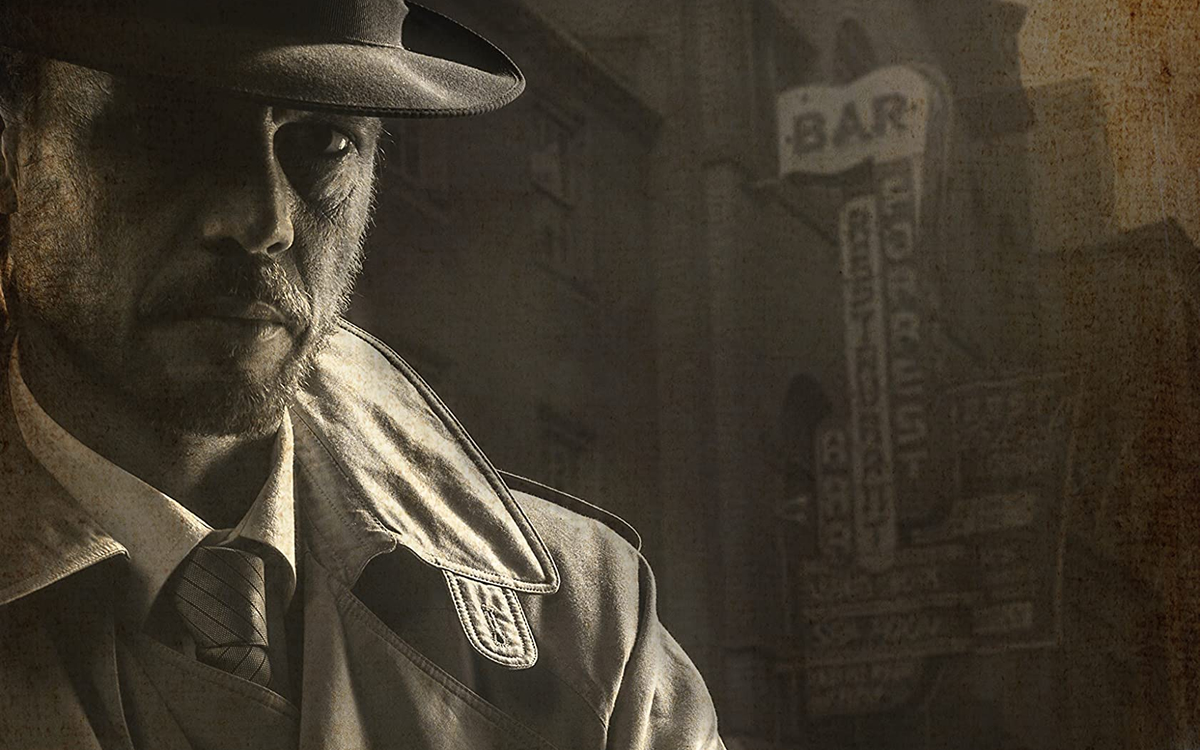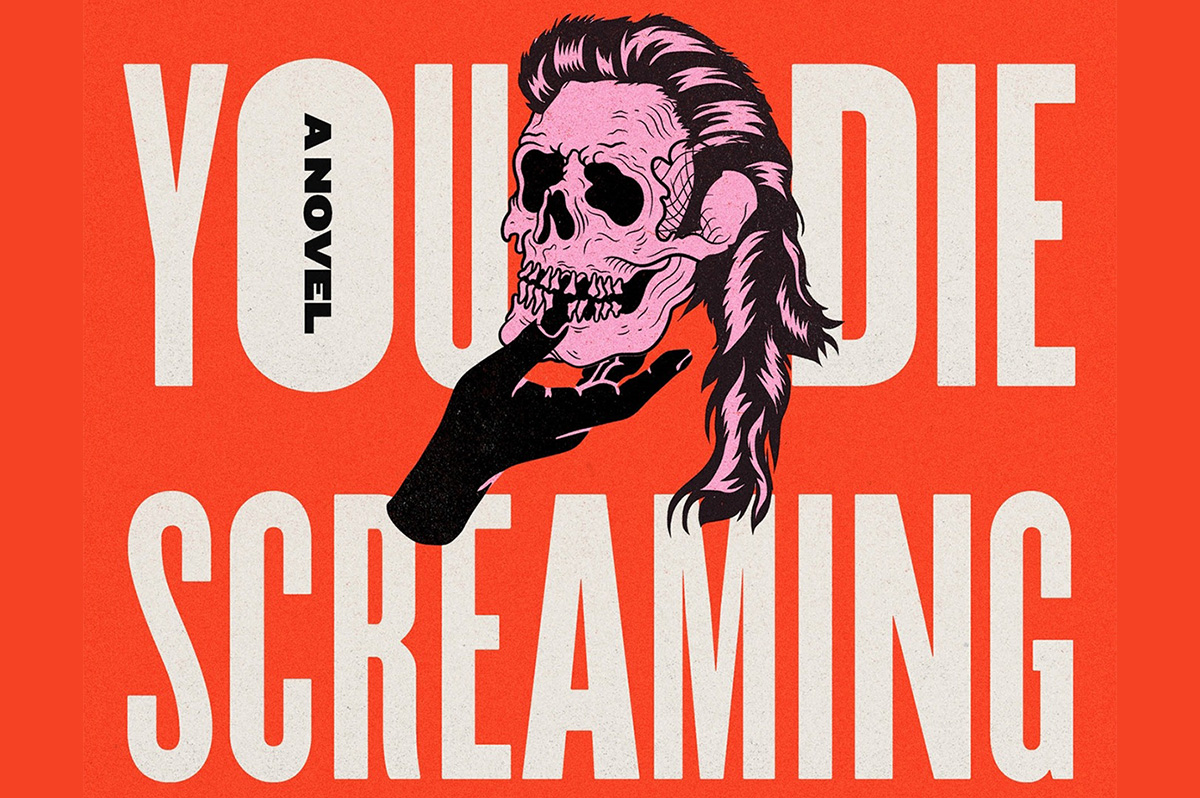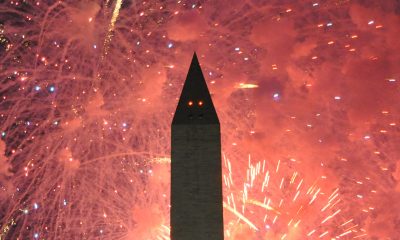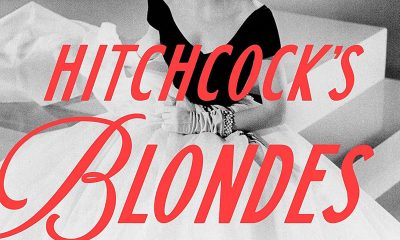Books
Fascinating mystery novel features gay private eye in 1947 Philly
‘Knock off the Hat’ explores a world before LGBTQ rights advances

‘Knock Off the Hat: A Clifford Waterman Gay Philly Mystery’
By Richard Stevenson
c.2022, Amble Press
$18.95/200 pages
The Horn & Hardart automat is a great place to meet friends and eat (on the cheap) delicious meatloaf and coconut cream pie.
People wonder when Connie Mack, the Philadelphia Athletics’ manager, will retire and have a ballpark named after him.
If you’re queer, you dance, drink and hook-up in gay bars.
Life is good. Even on summer nights when few places are air conditioned. Except that if you’re queer, you can be arrested if you’re in a gay bar that’s raided by the police. If you’re arrested, your name will likely appear in the Philadelphia Inquirer on a list of “deviants.”
This is the world of Clifford Waterman, a gay private eye, the protagonist of “Knock Off the Hat,” the fascinating new mystery by Richard Stevenson.
The novel is set in 1947 in Philadelphia. During World War II, Clifford, a former police detective, was in the Army. He was an Army MP in Cairo, where he jokes, “I was working with US Army unintelligence.”
Clifford was dishonorably discharged from the Army for being gay. Though ironically, his job in the service was to round up “drunks,” “dope fiends” and “perverts.”
An officer found him one night, “enjoying the company of a nice man named Idriss, who normally cleaned the latrines,” Clifford says. “On this particular occasion, this pleasant chappie was cleaning my latrine.”
The era in which Clifford lives is repressive. The House Un-American Activities Committee is going after queer people and suspected Communists. If you’re LGBTQ and arrested in a bar raid, you’ll lose your job if your employer reads about it in the paper.
Yet Clifford respects himself. He proudly hangs his dishonorable discharge on his office wall.
In “Knock Off the Hat,” Clifford is called upon to use his detective skills, street-smarts and connections in the queer community, to solve a terrifying, puzzling mystery.
Usually, queer people who are arrested in a gay bar raid for “disorderly conduct,” can pay off Judge Harold Stetson. (Stetson is called “the Hat” because his surname is the name of a type of hat.) If they pay the judge $50 (a lot of money, but, with some belt-tightening, doable), they’ll avoid “public humiliation along with a hefty fine or even jail time,” Stevenson writes.
But now, the judge and his clerk have gone bonkers. They’re requiring queer people to pay Judge Stetson $500. If they don’t pay up, their professional and personal life will be ruined.
Scarcely anyone can afford this sum. A gay man, who’s proud to be a salesperson in the shoe department of the glam department store Wanamakers, is comparatively lucky. After he’s arrested in a bar raid, he sells his car to get the $500 to pay off the judge. Other queer people end up working at gas stations or even kill themselves because they don’t have that kind of money.
“Knock Off the Hat” takes place at a time when queer lives were, largely, devalued. Yet it’s far from grim.
The novel is filled with dark humor and engaging characters from an actress who pretends to be a deceased gay man’s fiancee to a left-wing queer farmer. In one scene, after Lauren Bacall drops into a dinner party, it’s revealed that her “dick” is “bigger than Bogie’s.”
Richard Stevenson is the pen name of the groundbreaking mystery writer Richard Lipez. “Knock Off the Hat,” was published after Lipez, who was openly gay, died at 83 in March 2022. Lipez envisioned “Knock Off the Hat” as being the first in a series featuring Clifford Waterman.
Also, under the pseudonym Richard Stevenson, Lipez over four decades (beginning in 1981 with “Death Trick”) wrote 17 mysteries featuring the queer detective Donald Strachey. “Chasing Rembrandt,” the last of the Donald Strachey series, will be released by ReQueered Tales in fall 2022.
The Strachey mysteries, set in Albany, N.Y., in the late 1970s, 1980s and 1990s, are less dark than “Knock Off the Hat.” Donald Strachey, his lover Timmy and many of the other queer characters dance, cruise, and indulge in camp humor. Yet without being preachy, the Strachey mysteries address AIDS and other serious issues.
“Knock Off the Hat” is as riveting as the best of Raymond Chandler. Though it’s highly entertaining, reading it in this “Don’t Say Gay” era, is sobering. The novel with its depiction of a time when queers had no rights is a chilling reminder that we can’t afford to be complacent.
This isn’t meant to be a downer. Libation in hand, treat yourself this summer. Check out “Knock Off the Hat.”
Books
Embracing the chaos can be part of the fun
‘Make Sure You Die Screaming’ offers many twists and turns

‘Make Sure You Die Screaming’
By Zee Carlstrom
c.2025, Random House
$28/304 pages
Sometimes, you just want to shut the door and forget what’s on the other side.
You could just wipe it from your memory, like it didn’t occur. Or create an alternate universe where bad things never happen to you and where, as in the new novel “Make Sure You Die Screaming” by Zee Carlstrom, you can pretend not to care.

Their mother called them “Holden,” but they’d stopped using that name and they hadn’t decided what to use now. What do you call an alcoholic, queer, pessimistic former ad executive who’s also “The World’s First Honest White Man,” although they no longer identify as a man? It’s a conundrum that they’ll have to figure out soon because a cop’s been following them almost since they left Chicago with Yivi, their psychic new best friend.
Until yesterday, they’d been sleeping on a futon in some lady’s basement, drinking whatever Yivi mixed, and trying not to think about Jenny. They killed Jenny, they’re sure of it. And that’s one reason why it’s prudent to freak out about the cop.
The other reason is that the car they’re driving was stolen from their ex-boyfriend who probably doesn’t know it’s gone yet.
This road trip wasn’t exactly well-planned. Their mother called, saying they were needed in Arkansas to find their father, who’d gone missing so, against their better judgment, they packed as much alcohol as Yivi could find and headed south. Their dad had always been unique, a cruel man, abusive, intractable; he suffered from PTSD, and probably another half-dozen acronyms, the doctors were never sure. They didn’t want to find him, but their mother called…
It was probably for the best; Yivi claimed that a drug dealer was chasing her, and leaving Chicago seemed like a good thing.
They wanted a drink more than anything. Except maybe not more than they wanted to escape thoughts of their old life, of Jenny and her death. And the more miles that passed, the closer they came to the end of the road.
If you think there’s a real possibility that “Make Sure You Die Screaming” might run off the rails a time or three, you’re right. It’s really out there, but not always in a bad way. Reading it, in fact, is like squatting down in a wet, stinky alley just after the trash collector has come: it’s filthy, dank, and profanity-filled. Then again, it’s also absurd and dark and philosophical, highly enjoyable but also satisfying and a little disturbing; Palahniuk-like but less metaphoric.
That’s a stew that works and author Zee Carlstrom stirs it well, with characters who are sardonic and witty while fighting the feeling that they’re unredeemable losers – which they’re not, and that becomes obvious.
You’ll see that all the way to one of the weirdest endings ever.
Readers who can withstand this book’s utter confusion by remembering that chaos is half the point will enjoy taking the road trip inside “Make Sure You Die Screaming.”
Just buckle up tight. Then shut the door, and read.
The Blade may receive commissions from qualifying purchases made via this post.
Books
Two new books on dining out LGBTQ-style
Visit nightclubs, hamburger joints, and a bathhouse that feeds customers

‘What is Queer Food? How We Served a Revolution’
By John Birdsall
c.2025, W.W. Norton
$29.99/304 pages
‘Dining Out: First Dates, Defiant Nights, and Last Call Disco Fries at America’s Gay Restaurants’
By Erik Piepenburg
c.2025, Grand Central
$30/352 pages
You thought a long time about who sits where.
Compatibility is key for a good dinner party, so place cards were the first consideration; you have at least one left-hander on your guest list, and you figured his comfort into your seating chart. You want the conversation to flow, which is music to your ears. And you did a good job but, as you’ll see with these two great books on dining LGBTQ-style, it’s sometimes not who sits where, but whose recipes were used.
When you first pick up “What is Queer Food?” by John Birdsall, you might miss the subtitle: “How We Served a Revolution.” It’s that second part that’s important.

Starting with a basic gay and lesbian history of America, Birdsall shows how influential and (in)famous 20th century queer folk set aside the cruelty and discrimination they received, in order to live their lives. They couldn’t speak about those things, he says, but they “sat down together” and they ate.
That suggested “a queer common purpose,” says Birdsall. “This is how who we are, dahling, This is how we feed our own. This is how we stay alive.”
Readers who love to cook, bake or entertain, collect cookbooks, or use a fork will want this book. Its stories are nicely served, they’re addicting, and they may send you in search of cookbooks you didn’t know existed.
Sometimes, though, you don’t want to be stuck in the kitchen, you want someone else to bring the grub. “Dining Out” by Erik Piepenburg is an often-nostalgic, lively look at LGBTQ-friendly places to grab a meal – both now and in the past.

In his introduction, Piepenburg admits that he’s a journalist, “not a historian or an academic,” which colors this book, but not negatively. Indeed, his journeys to “gay restaurants” – even his generous and wide-ranging definitions of the term – happily influence how he presents his narrative about eateries and other establishments that have fed protesters, nourished budding romances, and offered audacious inclusion.
Here, there are modern tales of drag lunches and lesbian-friendly automats that offered “cheap food” nearly a century ago. You’ll visit nightclubs, hamburger joints, and a bathhouse that feeds customers on holidays. Stepping back, you’ll read about AIDS activism at gay-friendly establishments, and mostly gay neighborhood watering holes. Go underground at a basement bar; keep tripping and meet proprietors, managers, customers and performers. Then take a peek into the future, as Piepenburg sees it.
The locales profiled in “Dining Out” may surprise you because of where they can be found; some of the hot-spots practically beg for a road trip.
After reading this book, you’ll feel welcome at any of them.
If these books don’t shed enough light on queer food, then head to your favorite bookstore or library and ask for help finding more. The booksellers and librarians there will put cookbooks and history books directly in your hands, and they’ll help you find more on the history and culture of the food you eat. Grab them and you’ll agree, they’re pretty tasty reads.
The Blade may receive commissions from qualifying purchases made via this post.

You’re going to be on your feet a lot this month.
Marching in parades, dancing in the streets, standing up for people in your community. But you’re also likely to have some time to rest and reflect – and with these great new books, to read.
First, dip into a biography with “Marsha: The Joy and Defiance of Marsha P. Johnson” by Tourmaline (Tiny Rep Books, $30), a nice look at an icon who, rumor has it, threw the brick that started a revolution. It’s a lively tale about Marsha P. Johnson, her life, her activism before Stonewall and afterward. Reading this interesting and highly researched history is a great way to spend some time during Pride month.
For the reader who can’t live without music, try “The Dad Rock That Made Me a Woman” by Niko Stratis (University of Texas Press, $27.95), the story of being trans, searching for your place in the world, and finding it in a certain comfortable genre of music. Also look for “The Lonely Veteran’s Guide to Companionship” by Bronson Lemer (University of Wisconsin Press, $19.95), a collection of essays that make up a memoir of this and that, of being queer, basic training, teaching overseas, influential books, and life.
If you still have room for one more memoir, try “Walk Like a Girl” by Prabal Gurung (Viking, $32.00). It’s the story of one queer boy’s childhood in India and Nepal, and the intolerance he experienced as a child, which caused him to dream of New York and the life he imagined there. As you can imagine, dreams and reality collided but nonetheless, Gurung stayed, persevered, and eventually became an award-winning fashion designer, highly sought by fashion icons and lovers of haute couture. This is an inspiring tale that you shouldn’t miss.
No Pride celebration is complete without a history book or two.
In “Trans History: From Ancient Times to the Present Day” by Alex L. Combs & Andrew Eakett ($24.99, Candlewick Press), you’ll see that being trans is something that’s as old as humanity. One nice part about this book: it’s in graphic novel form, so it’s lighter to read but still informative. Lastly, try “So Many Stars: An Oral History of Trans, Nonbinary, Genderqueer, and Two-Spirit People of Color” by Caro De Robertis (Algonquin Books of Chapel Hill. $32.00) a collection of thoughts, observations, and truths from over a dozen people who share their stories. As an “oral history,” you’ll be glad to know that each page is full of mini-segments you can dip into anywhere, read from cover to cover, double-back and read again. It’s that kind of book.
And if these six books aren’t enough, if they don’t quite fit what you crave now, be sure to ask your favorite bookseller or librarian for help. There are literally tens of thousands of books that are perfect for Pride month and beyond. They’ll be able to determine what you’re looking for, and they’ll put it directly in your hands. So stand up. March. And then sit and read.
-

 U.S. Supreme Court4 days ago
U.S. Supreme Court4 days agoSupreme Court to consider bans on trans athletes in school sports
-

 Out & About4 days ago
Out & About4 days agoCelebrate the Fourth of July the gay way!
-

 Virginia4 days ago
Virginia4 days agoVa. court allows conversion therapy despite law banning it
-

 Opinions5 days ago
Opinions5 days agoCan we still celebrate Fourth of July this year?








